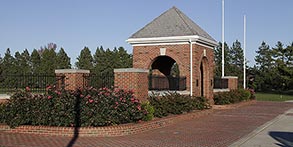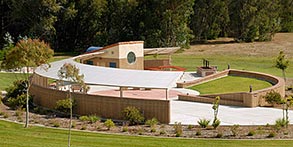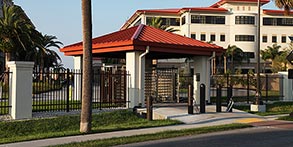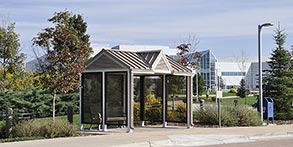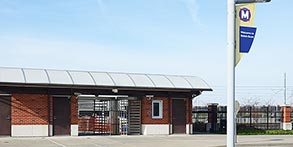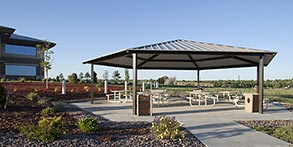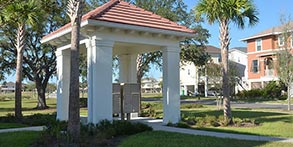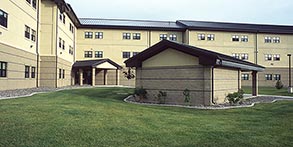- Ancillary structures should be generally limited to Group 1 facilities; minimize the use of these secondary structures. When these structures are required, ensure they are architecturally compatible with adjacent facilities.
- Organize buildings and activities to minimize the need for ancillary structures.
- Compatibly integrate required ancillary structures with the facilities they support.
- Avoid visual clutter when siting these facilities.
- Commercially available standard designs are preferred for repetitive structures; custom designs may be used for limited stand-alone special-function structures.
- Follow Installation Facilities Standards (IFS) in the design of all ancillary structures including pavilions, bus shelters, bike shelters and shade shelters.
Reinforce a facility hierarchy by designating a Facility Group number from the following section and provide appropriate architectural features, materials and detail for each group. Organize facilities into Groups 1, 2, 3 or 4. Materials and finishes in Group 1 facilities may be of higher visual quality than those in Group 2 facilities. Generally maintain higher durability in Group 3 facilities that are industrial in nature. Group 4 (family housing) systems, materials and finishes must respond to their residential use.
Relate durability of materials and refinement of detailing to a building’s type, operations and prominence on an installation. Design facilities to withstand their operations and to allow for multiple adaptations in use over time.
Non-appropriated Fund (NAF) projects must comply with AFI 32-1022 and AFI 34-205.
AFI 32-1022 Planning and Programming Non-Appropriated Fund Facility Construction Projects https://static.e-publishing.af.mil/production/1/af_a4/publication/afi32-1022/afi32-1022.pdf
Department of the Air Force Manual (DAFMAN) 32-1084 Facility Requirements https://www.wbdg.org/FFC/AF/AFMAN/afman32-1084.pdf
Air Force Design Guides / Standards (AFDG) https://www.wbdg.org/ffc/af-afcec/design-guides-standards
